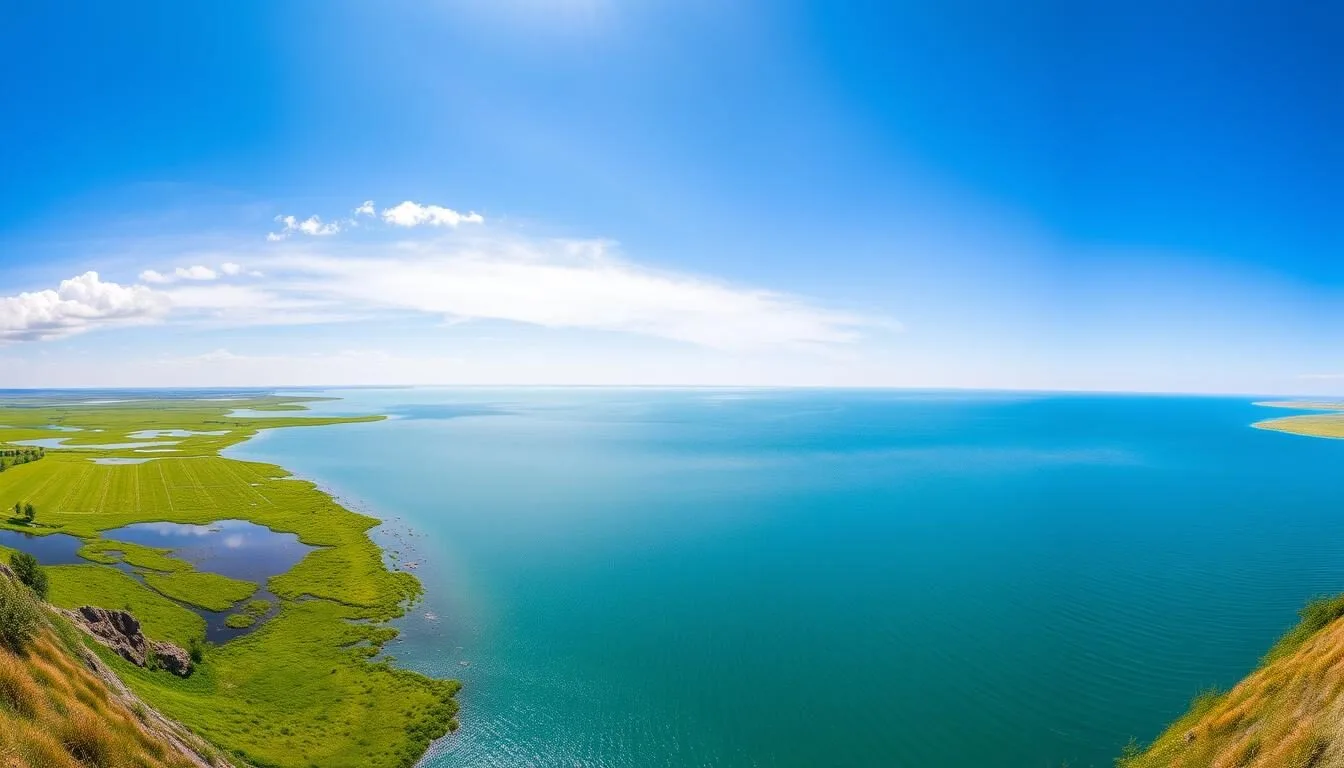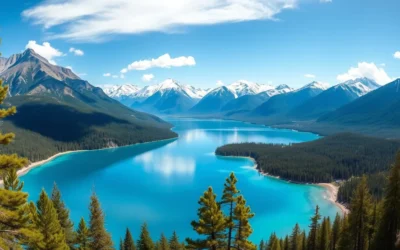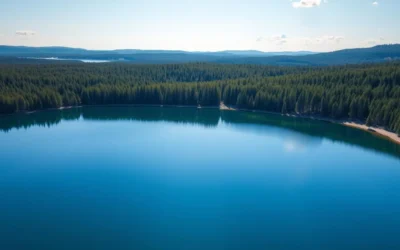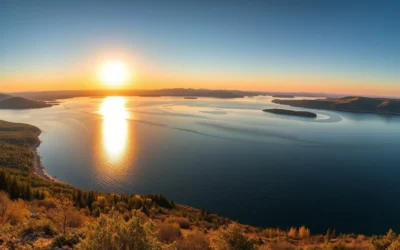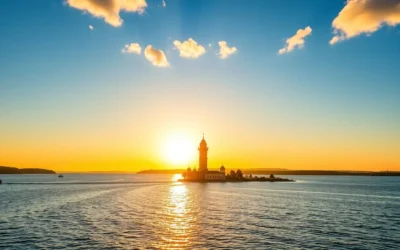Did you know that Lake Dzhankho (also known as Lake Khanka) is home to over 336 species of birds, making it one of Russia’s most important wetlands and a designated UNESCO biosphere reserve? This expansive freshwater lake, straddling the border between Russia and China, has been nicknamed the “Sea of Bird Feathers” since ancient times due to its remarkable biodiversity. As the largest freshwater lake in the Russian Far East, it offers travelers a unique glimpse into pristine natural ecosystems rarely experienced by international visitors.
The vast expanse of Lake Dzhankho, Russia’s largest freshwater lake in the Far East
Lake Dzhankho at a Glance
Lake Dzhankho, also referred to as Lake Khanka, sits majestically in the center of the Khankai lowland on the border between Russia’s Primorsky Krai and China’s Heilongjiang province. This pear-shaped lake spans an impressive 4,070 km² (1,570 sq mi), though its surface area fluctuates with climate conditions. With a length of about 90 km (56 mi) and maximum width of 67 km (42 mi), this shallow body of water averages just 4.5 meters (15 ft) in depth.
The lake’s ecological significance cannot be overstated. Since 1976, it has been recognized as a wetland of international importance under the Ramsar Convention. In 1996, Russia and China established an international nature reserve to protect this unique ecosystem, which later received UNESCO biosphere reserve status in 2005.
Location of Lake Dzhankho (Khanka) in Russia’s Primorsky Krai region
Best Time to Visit Lake Dzhankho

Summer at Lake Dzhankho offers ideal conditions for wildlife watching and outdoor activities
The climate around Lake Dzhankho features distinct seasons, with timing your visit crucial for the best experience. Here’s a seasonal breakdown to help you plan:
| Season | Months | Weather | Activities | Recommendation |
| Spring | April-May | 5-15°C (41-59°F), thawing ice | Bird migration watching, photography | Good time to visit |
| Summer | June-August | 20-25°C (68-77°F), occasional rain | Fishing, hiking, wildlife observation | Highly recommended |
| Fall | September-October | 10-20°C (50-68°F), cooling | Bird migration, photography | Good time to visit |
| Winter | November-March | -21°C to 0°C (-6°F to 32°F), frozen lake | Ice fishing (for experienced visitors only) | Not recommended for most tourists |
Pro Tip: The absolute best time to visit Lake Dzhankho is from mid-June to early August when temperatures are pleasant, wildlife is abundant, and the wetlands are teeming with activity. Avoid December through April when the lake is frozen and temperatures plummet well below freezing.
Rainfall primarily occurs during summer months, with annual precipitation averaging 500-650 mm. If you’re specifically interested in birdwatching, consider timing your visit during the spring or fall migration periods when you can observe numerous species passing through this important wetland.
Getting There & Planning Your Journey
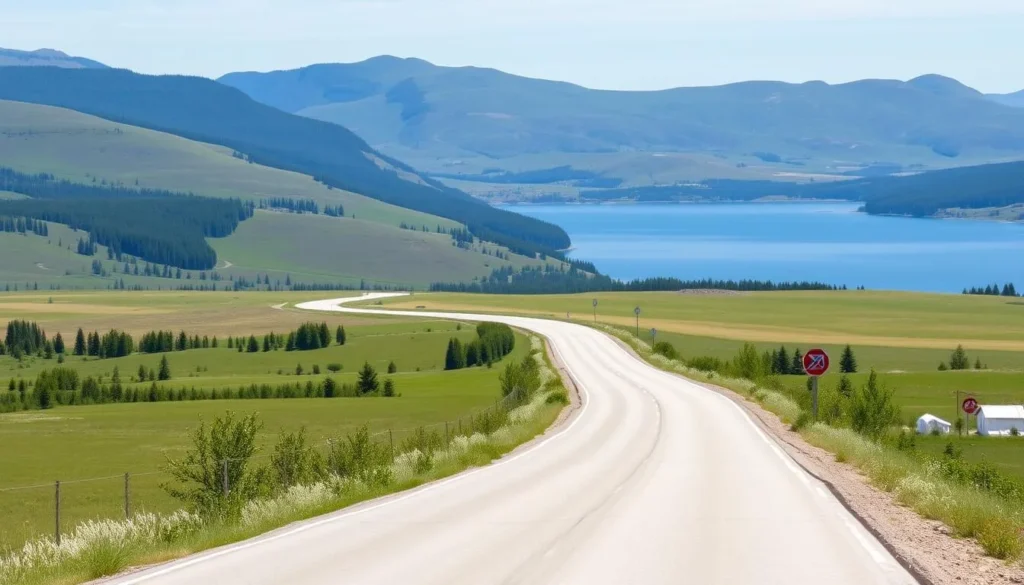
The scenic route to Lake Dzhankho through Russia’s Primorsky Krai region
Reaching Lake Dzhankho requires some planning, as it’s located in a relatively remote part of Russia’s Far East. Here are your best options for getting there:
By Air
The nearest major airport is Vladivostok International Airport (VVO), which receives flights from major Russian cities and some international destinations including Seoul, Tokyo, and Beijing. From there, you’ll need to continue your journey by land.
Find the Best Flight Deals to Vladivostok
Compare prices from multiple airlines and book your flight to start your Lake Dzhankho adventure.
By Land
From Vladivostok, you have several options:
- Rental car: The most flexible option, allowing you to explore at your own pace. The drive takes approximately 4-5 hours from Vladivostok to the lake area.
- Bus: Regular bus services run from Vladivostok to Spassk-Dalny (the nearest town to the lake), taking about 4 hours.
- Train: The Trans-Siberian Railway has stops near the lake region, though you’ll still need local transportation to reach the lake itself.
Explore with Freedom
Rent a car to discover Lake Dzhankho and the surrounding Primorsky Krai region at your own pace.
Permits and Preparation
Since Lake Dzhankho is part of a protected nature reserve, visitors should check if any permits are required before visiting. The reserve office in Spassk-Dalny can provide the most up-to-date information. Contact them at +7 (42352) 2-31-38 or visit their website at www.khanka-lake.ru for details.
Important: Foreign visitors to Russia require a visa. Apply well in advance of your planned trip, as the process can take several weeks. Additionally, register your stay with local authorities within 7 days of arrival if staying in Russia for more than 7 days.
Where to Stay Near Lake Dzhankho

Rustic accommodations near Lake Dzhankho offer peaceful lakeside views
Accommodation options directly at Lake Dzhankho are limited due to its protected status, but several good options exist in nearby towns and villages:
Spassk-Dalny
The closest town to the lake, Spassk-Dalny offers several basic hotels and guesthouses. While not luxury accommodations, they provide clean, comfortable rooms and often include breakfast. This is your best base for exploring the lake, as it’s also where the reserve’s office is located.
Ussuriysk
About 60 km (37 mi) from the lake, Ussuriysk is a larger city with more accommodation options, including mid-range hotels with modern amenities. Staying here means a longer drive to the lake but offers more comfort and dining options.
Vladivostok
If you prefer upscale accommodations, consider staying in Vladivostok and making day trips to the lake. The city offers international-standard hotels, though this means a 4-5 hour drive each way to visit the lake.
Find Your Perfect Stay
Browse accommodations near Lake Dzhankho and secure the best rates for your Russian adventure.
Local Tip: For an authentic experience, look for “guest houses” (гостевые дома) in smaller villages near the lake. These family-run accommodations often provide home-cooked meals and local insights you won’t find in standard hotels.
Things to Do at Lake Dzhankho

Birdwatchers from around the world visit Lake Dzhankho to observe its remarkable avian diversity
Lake Dzhankho offers numerous activities for nature lovers and outdoor enthusiasts. Here are the top experiences to enjoy during your visit:
Wildlife Watching
The lake is a paradise for birdwatchers, with 336 recorded species including 44 listed in Russia’s Red Book of endangered species. Bring binoculars to spot rare birds like Japanese and Daurian cranes, spoonbills, and the endangered red-legged ibis. The best spots for birdwatching are along the southern and eastern shores of the lake, particularly in the early morning or late afternoon.

The endangered Daurian crane is one of Lake Dzhankho’s most treasured residents
Fishing
The lake is home to 74 species of fish, including commercially valuable species like carp, pike, catfish, and snakehead. Fishing is permitted in designated areas with appropriate licenses, which can be arranged through the reserve office or local guides. The best fishing seasons are late spring and summer.
Hiking and Nature Walks
Several marked trails around the lake allow visitors to explore the diverse ecosystems, from wetlands to meadows and forest-steppe areas. The reserve offers guided tours that provide insights into the local flora and fauna, including some of the 620 plant species found in the region.
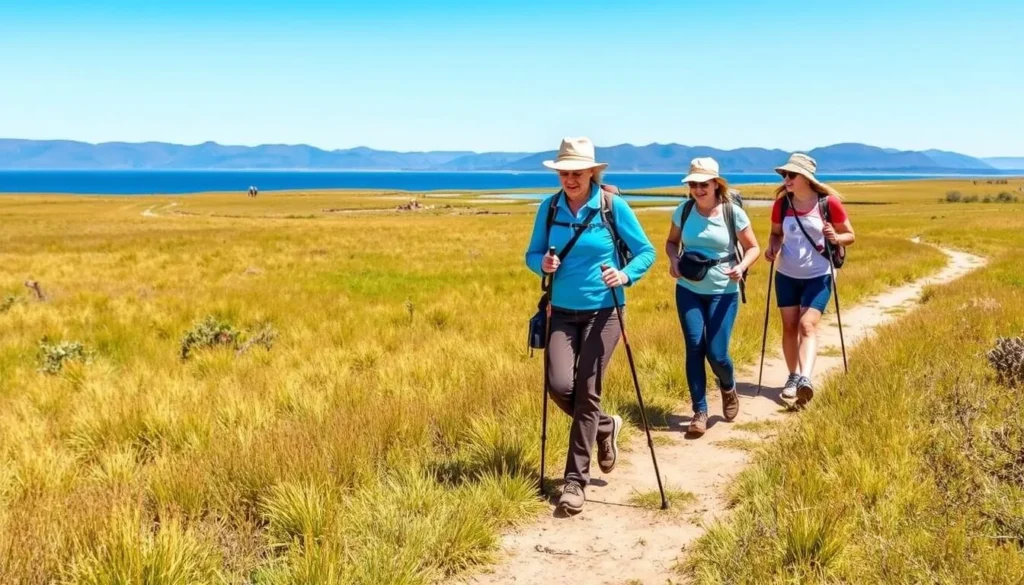
Exploring the diverse ecosystems surrounding Lake Dzhankho on marked nature trails
Photography
The lake’s diverse landscapes and wildlife make it a photographer’s dream. Dawn and dusk offer the most magical lighting conditions, with mist often rising from the water in the early morning. The wetlands, with their reflective waters and abundant birdlife, provide endless photographic opportunities.
Discover Guided Experiences
Enhance your visit with expert-led tours focusing on birdwatching, photography, or local ecology.
Local Culture and Cuisine

Local cuisine near Lake Dzhankho features freshwater fish prepared in traditional Russian styles
The Primorsky Krai region surrounding Lake Dzhankho has a rich cultural heritage influenced by Russian, Chinese, and indigenous traditions. The area was historically inhabited by various ethnic groups including the Udege and Nanai peoples before Russian settlement in the 19th century.
Local Cuisine
Food in the region reflects this cultural blend, with an emphasis on freshwater fish from the lake itself. Local specialties include:
- Ukha – A traditional Russian fish soup, often made with local carp or pike
- Stroganina – Thin slices of frozen raw fish, a delicacy in the Russian Far East
- Pyanse – Steamed buns with various fillings, reflecting Korean influence in the region
- Wild berries and mushrooms – Gathered from forests around the lake and used in various dishes
Cultural Experiences
While visiting the lake region, take time to explore the cultural aspects of Primorsky Krai:
- Visit the Spassk-Dalny Local History Museum to learn about the region’s natural and cultural history
- If your visit coincides with local festivals, particularly in summer, you might experience traditional music, dance, and crafts
- Look for opportunities to meet with local fishermen who can share stories about traditional fishing methods used on the lake for generations

Local fishermen maintain traditional fishing practices that have been used on Lake Dzhankho for generations
Practical Travel Tips
Proper preparation is essential for a comfortable and enjoyable visit to Lake Dzhankho
What to Pack
- Binoculars – Essential for wildlife watching, especially birds
- Insect repellent – Mosquitoes can be abundant, particularly in summer
- Sun protection – Hat, sunglasses, and sunscreen are necessary even on cloudy days
- Waterproof footwear – Many areas around the lake are marshy
- Layered clothing – Weather can change quickly, especially in spring and fall
- Camera with zoom lens – For capturing wildlife from a respectful distance
- Water and snacks – Facilities are limited around the lake
Safety Considerations
While Lake Dzhankho is generally safe to visit, keep these points in mind:
- Stay on marked trails and respect boundaries of protected areas
- Inform someone of your plans if hiking independently
- Carry a basic first aid kit, especially when venturing away from populated areas
- Be aware that cell phone coverage may be spotty around the lake
- Check weather forecasts before setting out, as conditions can change rapidly
Language
Russian is the primary language spoken in the region, and English is not widely spoken outside major cities. Consider downloading a translation app or learning a few basic Russian phrases to facilitate communication. Having your accommodation details and destinations written in Russian can help when asking for directions.
Respect the Environment: Lake Dzhankho is a protected ecosystem. Take all trash with you, stay on designated paths, maintain a safe distance from wildlife, and follow all reserve regulations to help preserve this unique natural treasure for future generations.

The magical sunset over Lake Dzhankho offers a perfect end to a day of exploration
Lake Dzhankho stands as one of Russia’s most remarkable yet underappreciated natural treasures. This vast freshwater lake, with its extraordinary biodiversity and protected status, offers nature enthusiasts a rare opportunity to experience pristine ecosystems and observe wildlife in their natural habitat. From the thrill of spotting endangered bird species to peaceful moments watching the sun set over the expansive waters, a visit to Lake Dzhankho creates memories that will last a lifetime.
While reaching this remote destination requires some planning, the reward is access to a natural wonder that few international travelers ever experience. Whether you’re an avid birdwatcher, a photography enthusiast, or simply someone seeking connection with unspoiled nature, Lake Dzhankho promises an authentic Russian Far East adventure far from the typical tourist path.
Start Planning Your Lake Dzhankho Adventure
From flights to accommodations and local experiences, begin your journey to one of Russia’s most spectacular natural wonders today.
The above is subject to change.
Check back often to TRAVEL.COM for the latest travel tips and deals.
